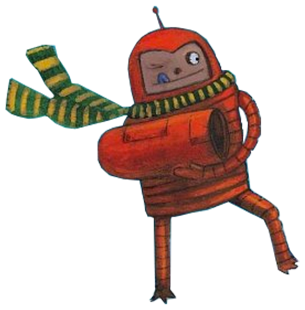Language development in children is their ability to process speech and to learn how to communicate. A child progressively picks up language patterns and sounds and slowly expands their vocabulary. Their environment, physical development, cognitive development, and emotional development influences the child’s language capabilities. There is no one size fits all rate of development. However, there are certain markers that parents can look out for as the child grows. Let’s first break down these stages and then look at how reading is an effective tool to enhance and optimize language development.
 Stages of Language Development:
Stages of Language Development:
Here are the markers to look out for as your child’s language is developing according to a leading parenting website:’
3-12 months:
At 3 months, the child will coo, smile, and laugh, and starts to communicate with gestures like waving and pointing.
At 4-6 months, the child starts babbling and making single-syllable sounds like ‘ba’ first, before repeating them–‘ba ba ba’.
Between 6-12 months, babbling leads to ‘baby talk’ where your child might sound like they’re telling you something, but their ‘speech’ are not recognisable words.
12-18 months:
At this age, children often say their first words with meaning. For example, when the child says ‘Dada’, they are actually calling for dad. The child’s vocabulary grows and they understand more than they can speak.
18 months to 2 years:
The child will understand most of what you say, and you can understand most of what the child says to you. Most children put two words together into short ‘sentences’.
2-3 years:
The child is improving at saying words correctly and starts to most likely speak in sentences of 3-4 words. Strangers will understand three-quarters of what the child says by the time they are three.
3-5 years:
Expect more complex conversations about the child’s thoughts and feelings. The child might also ask about things that are not directly in front of them and show an understanding of basic grammar.
5-8 years:
These are the early school years. The child learns how to put words together in different ways and builds sentences so they can express their ideas and opinions. Expect stories!
8-10 years:
The child’s new thinking and language skills allow them to make social connections. They get better at listening in conversation, rather than just waiting for their turn to speak. They can read the words in a book.
11-13 years:
The child is conversational and creates complex sentences at this stage. They apply logic and metaphor.
How Reading Helps Language Development:
Being able to communicate is so crucial to the child’s success inter-relationally and as well as learning in school! One of the most important benefits of reading is that it helps develop vocabulary and language skills by introducing a wide range of words and phrases that they may not encounter in their everyday conversations. Given that the child’s ability to retain new words is exponential when they are pre-readers, before schooling, giving them a head start with a steady stream of books and reading is paramount.
Reading helps the child develop comprehension and critical thinking skills – actively engaging with the text and making inferences, predictions, and connections in order to understand what they are reading. This process helps them develop their ability to think deeply and critically about the information they are reading, which is a crucial skill for success in school and in life.
Books for Each Stage of Language Development:
There are different books that coincide with the child developmentally:
3 months to 3 years:
Books at this stage are smaller, shorter, and made of board, fabric, or are waterproof. There is no more than 1-3 words on a page and does not exceed around 20 pages. The text is short, concrete, and sensory, and often has rhymes or alliteration.
3 – 5 years:
Books at this stage can be bigger for holding. Picture books can have a narrative or storyline, with no more than 1-2 sentences on each page.
5 – 7 years:
The child is able to read words and is now an early reader. Books are slightly longer – picture books or even early reader formats. Images and illustrations are still essential to hold their attention at this point. There are between 30-100 pages as they the stories get more complex.
8 – 13 years:
The child finally arrives at the stage where they can follow along a complex story with metaphor, social and cultural issues in the form of a chapter book. Generally chapter books are upwards of 120 pages and contain no illustrations.
Here are two places you can read more about this from a writer’s point of view and from our point of view as readers.
The Importance of Access to Books:
Regular access to books is important for fostering a love of reading in children. When children have regular access to books, they are more likely to develop a love of reading and to seek books on their own. This love of reading can lead to a lifetime of enjoyment and learning, as well as improved academic and professional success.
There are many ways that parents and caregivers can provide regular access to books for children. One of the most effective ways is to have a well-stocked home library that includes a wide range of books for children of different ages and interests. Encouraging children to visit the library and to borrow books regularly is also a great way to provide them with access to a wide range of books.
Another viable option is to enroll them in a children’s book club or a children’s book subscription box so they have new material regularly. At the Little Fun Club, we curate books for each child based on their interests, age, reading levels, and any additional information that their caregiver wants to provide. We find the books, pack, and ship them – all you have to do is sign them up and watch them grow into amazing readers with each delivery!
Sign up today for a monthly delivery or 2-3 books in a box delivered to your doorstep: www.littlefunclub.com


